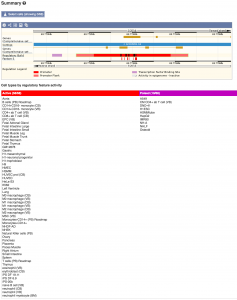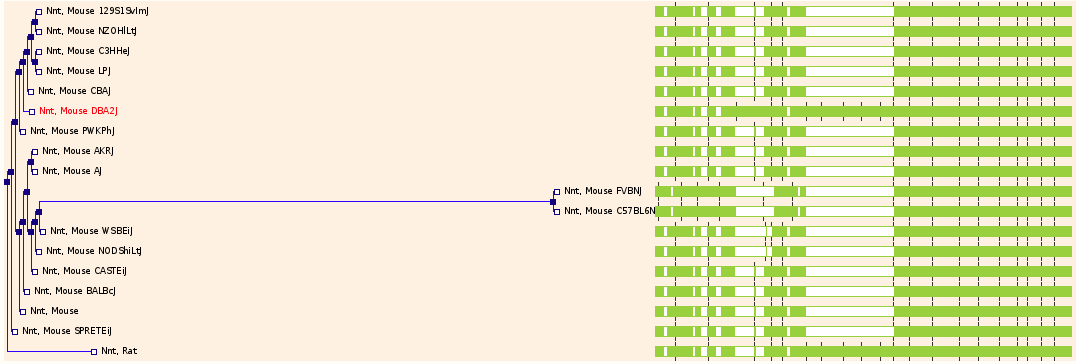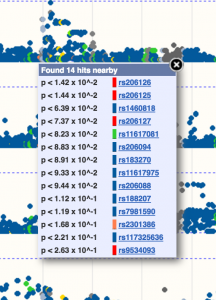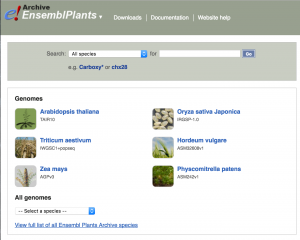Please note that eg34 is a maintenance release, consisting of fixes to data and software issues. No significant updates have been included.
You can view the release notes here.
 Ensembl Blog
Ensembl BlogPlease note that eg34 is a maintenance release, consisting of fixes to data and software issues. No significant updates have been included.
You can view the release notes here.
In Ensembl 87, there are a number of updates to the assemblies and gene sets for several species:
e87 includes an updated Ensembl-Havana mouse gene set, a merge of complete Ensembl gene models and the latest Havana gene annotation. All CCDS genes are included in this gene set.
This latest Havana gene annotation includes improved gene models for the mouse olfactory receptors. Over 2Mbp of additional sequence has been added to the mouse olfactory genes to create several hundred multi-exonic models. These new models are based on RNA-seq data from Ibarra-Soria X et. al.
The mouse assembly has been updated to GRCm38.p5. The patches for GRCm38.p5 were annotated using a combination of manual annotation, annotation projected from the primary assembly and annotation derived from cDNA and protein alignment evidence.
Due to the high number of epigenomes now available in the Human Regulatory Build, we can no longer show them all by default on the Regulation Summary image, in the Regulation Tab. We have therefore added a table listing the cell types by their regulatory feature activity.

A complete list of the changes can be found on the Ensembl website.
Find out more about the new release and ask the team questions, in our free webinar: Wednesday 14th December, 4pm GMT. Register here.
Due to essential maintenance, the Ensembl helpdesk email will be shut down for approximately 48 hours, beginning at 9 am (GMT) on 25th November. Any emails sent during this time will be held in a queue, and we will respond to them when the system is up and running again, although there may be some delay. You will not receive any confirmation of your email, as this is automatically generated by the system.
You can also post queries to the Ensembl dev list and BioStars (please add “Ensembl” as a tag).
We will update you when the system is back.
We apologise for any inconvenience this may cause.
Ensembl Plants takes centre stage in the release of Ensembl Genomes 33, with a variety of new data available for a number of different species:
You can find more details in the release notes.
We are postponing this maintenance until the beginning of November for technical reasons. Specific dates will be released as they are finalised.
Due to essential maintenance, the Ensembl helpdesk email will be shut down for approximately 48 hours, beginning at 9 am (BST) on 24th October. Any emails sent during this time will be held in a queue, and we will respond to them when the system is up and running again, although there may be some delay. You will not receive any confirmation of your email, as this is automatically generated by the system.
You can also post queries to the Ensembl dev list and BioStars (please add “Ensembl” as a tag).
We will update you when the system is back.
We apologise for any inconvenience this may cause.
In Ensembl 86, you will now be able to view the annotated genome assemblies, variation data and comparative analyses of 16 different mouse strains, produced by the Mouse Genomes Project. While the GRCm38 assembly (produced from Mus musculus strain C57BL/6J) remains the reference assembly, variants and comparative analyses for the other strains can be viewed through the Gene tab and the Location tab. You can find the gene trees and orthologue/paralogue predictions for the mouse strains through the Strains option in the menu in the Gene tab. The mouse strain gene tree depicts the evolutionary history of genes (left) and protein alignment (right) for the individual mouse strains and rat. 
 You can find the variants between these mouse strains through the Strain table option in the menu in the Location tab. The strain table displays the alleles identified at variant positions across the 16 mouse strains.
You can find the variants between these mouse strains through the Strain table option in the menu in the Location tab. The strain table displays the alleles identified at variant positions across the 16 mouse strains. 
In Ensembl 86, there will also be a number of updates to the assemblies and gene sets for a number of different species:
As of release 86, you can now view transcripts on the mobile version of Ensembl. You can also view exon sequence, cDNA sequence and protein sequence by clicking on the lefthand arrow.
The gene sequence is also now available to view on mobile devices. Just go to any gene page and click on the left hand arrow and then choose sequence.
A complete list of the changes can be found on the Ensembl website.
Find out more about the new release and ask the team questions, in our free webinar: Tuesday 11th October, 4pm BST. Register here.
Ensembl incorporated haplotype data from the 1000 Genomes Project into e!84, which was released in March 2016. These data allow you to view genomic sequence variants that associate together—haplotypes—and how they track through individuals and populations. Continue reading
Ensembl 86 is scheduled for September 2016, highlights include:
A number of tools previously developed for use in the 1000 Genomes Project browser have now been converted for use with the GRCh37 assembly in Ensembl:
For more details on the declared intentions, please visit our Ensembl admin site. Please note that these are intentions and are not guaranteed to make it into the release.
As part of Ensembl 85, we are excited to introduce expression quantitative trait loci (eQTL) data, through our partnership with the Genotype-Tissue Expression (GTEx) project.
The GTEx project has the goal of identifying the influence of genetics on tissue-specific gene expression, i.e. to map correlations between genotype (SNPs) and gene expression levels (RNA-seq). eQTLs are variants which are found to be significantly correlated with differences in gene expression. Though still in its infancy, we hope that in time this type of data will allow us to conclusively determine the link between regulatory features and their gene targets.
Thanks to our use of HDF5 technology, we offer the only rapid look-up service across all GTEx SNP-gene association tests. We have included all of the correlated variants, including those that fall short of the significance threshold. The GTEx V6 dataset represents 7051 tissue samples from 44 tissues of 449 donors, and a total of 6 billion data points.
To view GTEx eQTL data for any gene, navigate to the gene tab and select ‘regulation’ in the left panel. The display will show one example track of GTEx data for a single tissue. Configuring the page allows you to add more GTEx tracks for each tissue type, by selecting ‘other regulatory regions’ and choosing the tissues you are interested in:
The SNPs are displayed in a Manhattan plot on these tracks, and are coloured according to their consequences on the transcript – as determined by the VEP. Clicking on any of the variants will display correlation statistics and a link to the variant tab. Where the SNPs are clustered, clicking will bring up a list of all variants nearby:

We have also provided Ensembl REST API endpoints to access these data. Currently, these methods allow you to quickly find the beta correlations and their p-values filtered by gene, SNP and/or tissue. You can also list all the tissue types that are currently available on our server.
Currently we are displaying the variants around a gene and their correlation to its expression level. In our next release (e86), on the Variant view, we will display all the genes whose expression levels are correlated to that variant. We will also display the beta effect sizes on the Manhattan plots.
If you have any feedback or questions relating to eQTLs in Ensembl, please contact the helpdesk.
Ensembl Plants now has an archive site, where we will keep selected previous releases of Ensembl Plants publicly available. The first release available on the archive site is release 31, and includes the previous assemblies for wheat and maize.

New assemblies in Ensembl Plants include:
Genome assemblies for 5 new species, including Beta vulgaris (sugar beet), Brassica napus (rapeseed) and Trifolium pratense (red clover)
Ensembl Metazoa: Rfam covariance models have been applied to all metazoan genomes, and are shown in the ‘Rfam models’ track in the genome browser. Click on a model to see the description and the secondary structure.
Ensembl Bacteria now includes the latest versions of 41,610 genomes (41,198 bacteria and 412 archaea) from the INSDC archives. In this release we added 2269 new genomes, 15 genomes with updated assemblies, 212 genomes with updated annotation, 906 genomes where the assigned name has changed, and 243 genomes removed since the last release.
Ensembl Fungi has been updated with 47 newly available genomes and now includes 634 genomes from 388 species. PHI-base references have been added where available, as have non-coding RNA matches to Rfam.
25 new genomes have been added to Ensembl Protists, which now includes 178 genomes from 114 species.
You can find more details in the release notes.